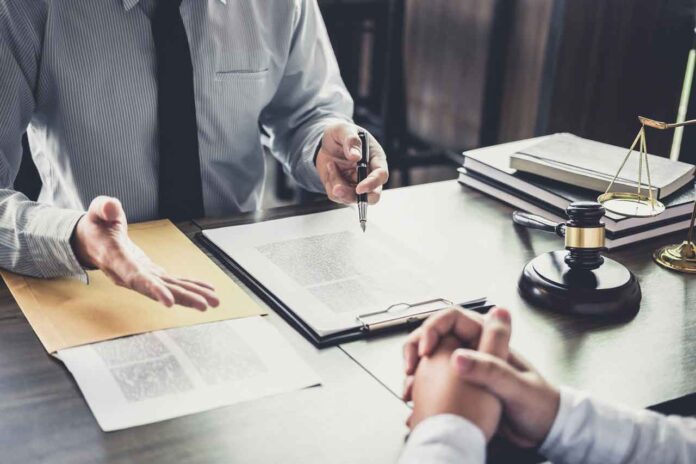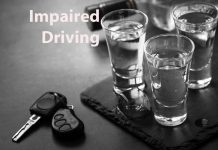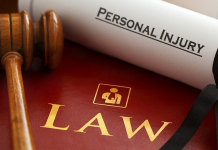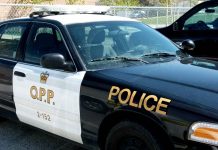Been in a fender bender? It happens to the best of us. But beyond the shaken nerves and dented bumpers, a car accident raises a crucial question: who’s at fault? Figuring out fault is like untangling a messy knot—it might seem complex, but understanding it is essential.
This guide will provide clarity on the murky waters of car accident liability. We’ll break down what ‘fault’ means in this context, explore common scenarios where fault is clear (or not so clear), and explain how to gather evidence to strengthen your case.
By the end, you’ll be equipped to understand fault after a car accident and know when to seek legal help to get the compensation you deserve.
 Understanding Fault in Car Accidents
Understanding Fault in Car Accidents
Fault (also referred to as liability) determines who’s legally responsible for the accident. This can significantly impact your car insurance claim. If another driver’s negligence (careless behavior) caused the accident, their insurance company should be on the hook for covering the costs, including vehicle damage repairs, medical expenses, and lost wages if you were unable to work.
So, how exactly is fault determined in a car accident? It boils down to identifying the driver whose actions (or inactions) violated traffic laws or basic principles of safe driving, ultimately causing the collision.
This can be straightforward in cases like rear-end collisions, where the driver who wasn’t paying attention is likely at fault. However, things can get trickier when the details are less clear-cut. In such situations, it’s beneficial to hire a trusted car accident lawyer in Topeka to help handle the complexities of determining fault.
Types of Fault in Car Accidents
Determining fault often relies on the specific actions or inactions of the drivers involved. Here’s a breakdown of the most common types of fault:
Negligence
A driver failed to act with reasonable care under the circumstances, leading to the accident. Examples include distracted driving, speeding, failing to yield, or driving under the influence.
Recklessness
This involves a conscious disregard for the safety of others. Examples include drag racing, weaving in and out of traffic, or driving at excessively high speeds.
Strict Liability
Fault is automatically assigned regardless of the driver’s behavior in certain situations. Examples include accidents caused by defective car parts or commercial truck accidents where the trucking company might be held liable.
Understanding these different types of fault is crucial for protecting your rights after a car accident.
Common Scenarios and Determining Fault in Car Accidents
The specific circumstances surrounding a car accident play a major role in assigning fault. Here are some common scenarios and how fault is typically determined:
Rear-End Collisions
This type of collision often points to the negligent driver following too closely. Exceptions can exist if the front car brakes suddenly due to an unforeseen situation.
Left-Turn Accidents
Drivers making left turns must yield the right of way to oncoming traffic. If they fail to yield and cause a collision, they’ll likely be found at fault, though oncoming drivers speeding or disregarding signals can also influence fault determination.
Right-of-Way Violations
Failing to yield at intersections, stop signs, or red lights typically establishes fault for the driver who didn’t yield.
Lane Change and Merging Accidents
The responsibility falls on the driver changing lanes or merging to ensure it’s safe to do so. Fault is likely assigned to the driver who fails to yield or checks for a blind spot.
These are just a few examples, and the specifics of your situation will ultimately determine fault.
Evidence for Establishing Fault in Car Accidents
Having a strong case depends on presenting compelling evidence to support your claim of fault. Here’s what can help:
Police Reports
These reports typically outline the officer’s observations, witness statements, and their initial determination of fault.
Witness Statements
Statements from bystanders can provide valuable insight into the events. Gather contact information and try to get written statements.
Photographs and Videos
Pictures and videos of the accident scene, vehicle damage, road conditions, weather conditions, skid marks, and injuries can be powerful visual evidence. Capture photos from different angles to document the scene thoroughly.
Traffic Camera Footage
Footage from nearby traffic cameras might help reconstruct the events. Inquire with local authorities about how to obtain relevant footage.
Expert Testimonies
Accident reconstruction experts can analyze evidence and provide valuable insights into how the collision occurred. Consider consulting an expert if necessary.
Gathering and presenting this type of evidence strengthens your position and increases your chances of a fair outcome.
Comparative and Contributory Negligence
Different states handle fault differently, which can affect the outcome of your claim:
Comparative Negligence
In states following comparative negligence laws, the percentage of fault attributed to each driver involved in the collision is calculated. This means that even if you’re partially responsible (for instance, 10%), you can still recover damages from the other driver. However, the amount you receive will be reduced in proportion to your assigned percentage of fault. Therefore, if the total damages amount to USD$10,000 and you’re found 10% at fault, you would be entitled to recover USD$9,000.
Contributory Negligence
In states implementing contributory negligence laws, if you’re found to have contributed to the accident in any way, even slightly, you may not recover any damages whatsoever.
Understanding these legal principles can help you set realistic expectations for compensation.
The Role of Insurance Companies
Insurance companies play a significant role in determining fault and handling claims:
Fault Determination by Insurers
Insurance adjusters investigate the accident to determine fault. They review evidence, police reports, and statements to assess liability.
Disputing Fault Determinations
If you disagree with the insurer’s decision, you can provide additional evidence or seek legal advice to challenge their findings.
Being aware of how insurance companies operate can help you better manage your claim and ensure a fair assessment.
Parting Perspective
When you’re dealing with the fallout from a car accident, getting a handle on who was at fault is hugely important. Having a clear understanding of your rights and how the legal process works lets you make smart choices about your next steps—including whether you have a reasonable claim for compensation.
If the evidence suggests someone else’s carelessness caused your injuries, it’s wise to bring in an experienced personal injury lawyer. They’ll be your advocate, walking you through the complex process and making sure your interests are fully represented every step of the way.








